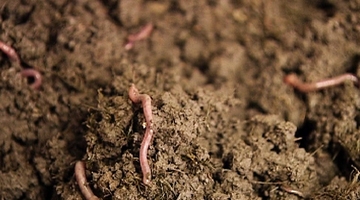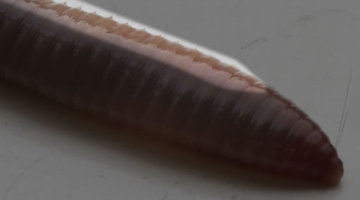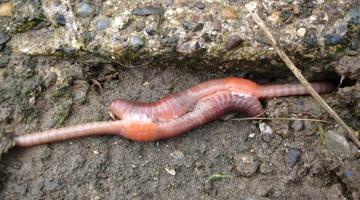Although earthworms are classified as animals, their bodies are quite different to animals that live above the ground. This video highlights some of the interesting physical characteristics common to earthworms.
Point of interest: Visit the two interactives that show the inside and outside of earthworms to learn more about their physical characteristics.
Transcript
Narrator
Movement
Earthworms are adapted for life underground. Their streamlined shape allows them to burrow through soil. They have no skeletons or other rigid structures to interfere with their movement. The earthworm’s body is divided into segments. Each segment has a number of setae or very small bristles that earthworms use to help them grip the soil as they move.
An earthworm moves by using two different sets of muscles. Circular muscles loop around each segment, and longitudinal muscles run along the length of the body. When the circular muscles contract, the earthworm stretches, becoming longer and thinner. The earthworm uses its setae to anchor the front of its body in the soil. Now the longitudinal muscles contract and the earthworm becomes shorter and wider or it bends from one side to the other, pulling the body forward. The earthworm withdraws the front setae and uses its rear setae to anchor itself at the back. The earthworm uses its circular muscles to lengthen and push itself forward again.
Senses
Earthworms have a head, though they have no eyes, nose or ears. The earthworms’ skin provides some of the services we normally associate with our own sense organs. Light-sensitive cells are scattered in their outer skin, mainly at the ends of their bodies. They allow earthworms to detect light and changes in light intensity. Earthworms don’t use a nose, mouth or lungs to breathe like we do. Instead they use oxygen that is dissolved in the moisture on their skin and from the surrounding environment. Earthworms cannot hear but they can sense vibrations.
Reproduction
Mature earthworms have a clitellum or a saddle. The size, shape, colour and position of the clitellum varies between species. The clitellum means the earthworm is an adult and is ready to mate and lay eggs. Earthworms reproduce by forming a small egg sac – called a cocoon – at the clitellum. The cocoon slides off of the earthworm’s body and is deposited in the soil.
Acknowledgements:
Ross Gray
Andreas Thomsen Creative Commons Attribution ShareAlike 3.0




